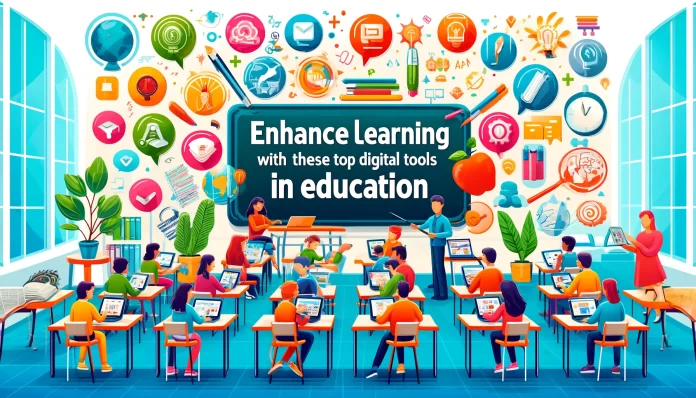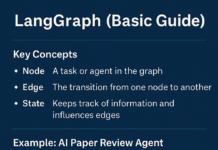In the rapidly evolving landscape of education, digital tools have become indispensable for enhancing learning experiences. These digital tools not only aid in teaching but also foster engagement, collaboration, and efficiency among students and educators. In this blog post, I will explore the top 20 digital tools in education that can transform the way we teach and learn.
The Importance of Digital Tools in Education
Digital tools have revolutionized education by providing innovative ways to engage students, streamline administrative tasks, and enhance the overall learning experience. They cater to various educational needs, from virtual classrooms and interactive lessons to advanced research and project management.
In my earlier blog post, ‘Best Digital Tools for Academic Research Every Researcher Needs to Know,’ I explored a range of essential digital tools for academic researchers.
Top 20 Digital Tools in Education
1. Google Classroom
Overview: Google Classroom is a free web service that integrates with Google Workspace, allowing teachers to create, distribute, and grade assignments efficiently.
Key Features:
- Easy assignment distribution and tracking
- Real-time collaboration through Google Docs, Sheets, and Slides
- Integration with other Google services
2. Kahoot!
Overview: Kahoot! is a game-based learning platform that makes learning fun and engaging through interactive quizzes and discussions.
Key Features:
- Create and share quizzes and surveys
- Real-time feedback and scoring
- Supports remote and in-class learning
3. Zoom
Overview: Zoom is a video conferencing tool that has become essential for virtual classrooms and remote learning, offering seamless communication and collaboration.
Key Features:
- High-quality video and audio conferencing
- Screen sharing and virtual whiteboards
- Breakout rooms for group activities
4. Microsoft Teams
Overview: Microsoft Teams is a collaboration platform that integrates with Office 365, providing a virtual space for classes, assignments, and communication.
Key Features:
- Channels for organized communication
- Integrated Office 365 tools
- File sharing and collaboration
5. Moodle
Overview: Moodle is an open-source learning management system (LMS) used by schools and universities to create personalized learning environments.
Key Features:
- Customizable course content
- Interactive activities and quizzes
- Detailed tracking and reporting
6. Edmodo
Overview: Edmodo is a social learning platform that connects teachers, students, and parents, facilitating resource sharing and communication.
Key Features:
- Assignment management and grading
- Safe and secure communication
- Integration with Google and Microsoft tools
7. Canvas
Overview: Canvas is a modern LMS that allows educators to manage and deliver educational content seamlessly.
Key Features:
- Intuitive course creation and management
- Mobile-friendly interface
- Extensive integration options
8. Seesaw
Overview: Seesaw is a student engagement platform where students can document their learning and teachers can provide feedback.
Key Features:
- Digital portfolios for students
- Interactive assignments and activities
- Parental involvement through updates
9. Nearpod
Overview: Nearpod is an interactive learning tool that enables teachers to create and share engaging lessons with students.
Key Features:
- Interactive presentations and activities
- Real-time student responses and feedback
- Integration with various content sources
10. Quizlet
Overview: Quizlet is a learning tool that offers various study modes, including flashcards, quizzes, and games, to help students retain information.
Key Features:
- Customizable flashcards
- Study games and quizzes
- Collaborative learning with classmates
11. Flipgrid
Overview: Flipgrid is a video discussion platform where teachers can post topics and students can respond with short videos.
Key Features:
- Video-based responses and discussions
- Easy integration with other tools
- Supports diverse learning styles
12. Padlet
Overview: Padlet is an online bulletin board where students and teachers can collaborate, reflect, and share links and pictures.
Key Features:
- Versatile collaboration space
- Easy-to-use interface
- Supports various content types
13. Socrative
Overview: Socrative is an interactive app for classroom engagement that provides real-time assessment through quizzes, polls, and games.
Key Features:
- Real-time quizzes and feedback
- Space race games for competitive learning
- Detailed reports and analytics
14. Duolingo
Overview: Duolingo is a language-learning app that offers courses in various languages through fun and engaging lessons.
Key Features:
- Gamified language lessons
- Progress tracking
- Wide range of languages available
15. Turnitin/iThenticate
Overview: Turnitin is an online tool for plagiarism detection and it ensures the originality of students’ work.
Key Features:
- Comprehensive plagiarism checks
- Feedback and grading tools
- Integration with LMS platforms
16. Prezi
Overview: Prezi is a presentation software that uses motion, zoom, and spatial relationships to create dynamic and engaging presentations.
Key Features:
- Unique, non-linear presentation style
- Collaborative editing
- Extensive template library
17. Slack
Overview: Slack is a messaging app for teams that can be used for communication and collaboration in educational settings.
Key Features:
- Channels for organized discussions
- Direct messaging and file sharing
- Integration with numerous apps
18. Trello
Overview: Trello is a project management tool that helps organize tasks, assignments, and projects in an educational context.
Key Features:
- Visual task boards and lists
- Collaboration and task assignments
- Integration with other productivity tools
19. Piktochart
Overview: Piktochart is a graphic design tool that allows users to create infographics, presentations, and reports.
Key Features:
- Easy-to-use design interface
- Customizable templates
- Support for various content types
20. Evernote
Overview: Evernote is a note-taking app that helps students and educators organize notes, research, and to-do lists.
Key Features:
- Cross-platform note syncing
- Rich media support (images, audio, files)
- Powerful search functionality
FAQs
Q1: How can digital tools improve the learning experience?
Digital tools enhance learning by providing interactive and engaging content, facilitating collaboration, and enabling personalized learning experiences.
Q2: Are these digital tools suitable for all educational levels?
Yes, many of these tools are versatile and can be adapted for use in primary, secondary, and higher education settings.
Q3: Do these tools require technical expertise to use?
Most of these tools are designed with user-friendly interfaces and provide tutorials or support to help educators and students get started.
Conclusion
Digital tools in education have the potential to transform the learning experience and make it more interactive, engaging, and efficient. By incorporating these top 20 digital tools into your educational practices, you can enhance teaching methods, improve student engagement, and streamline administrative tasks.
Embrace these technologies to stay ahead in the ever-evolving educational landscape.














